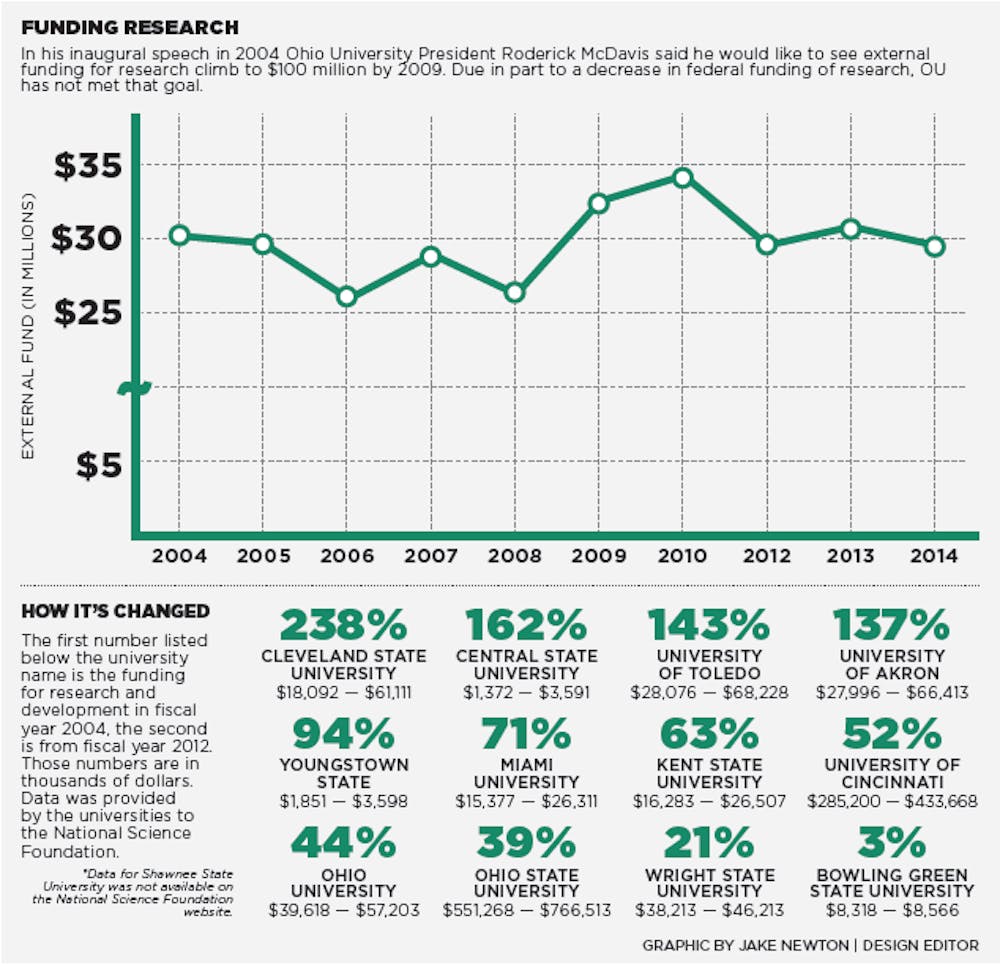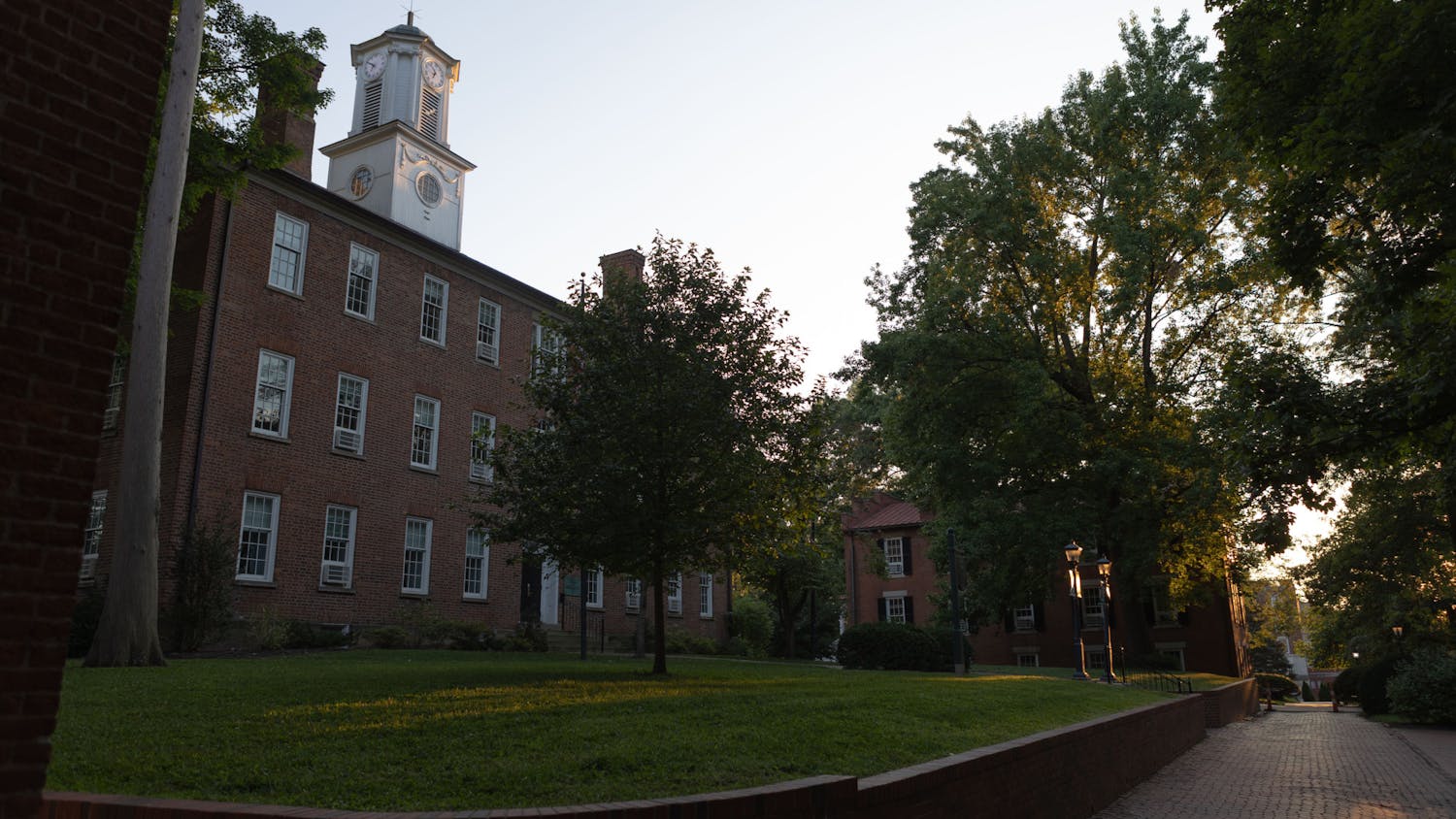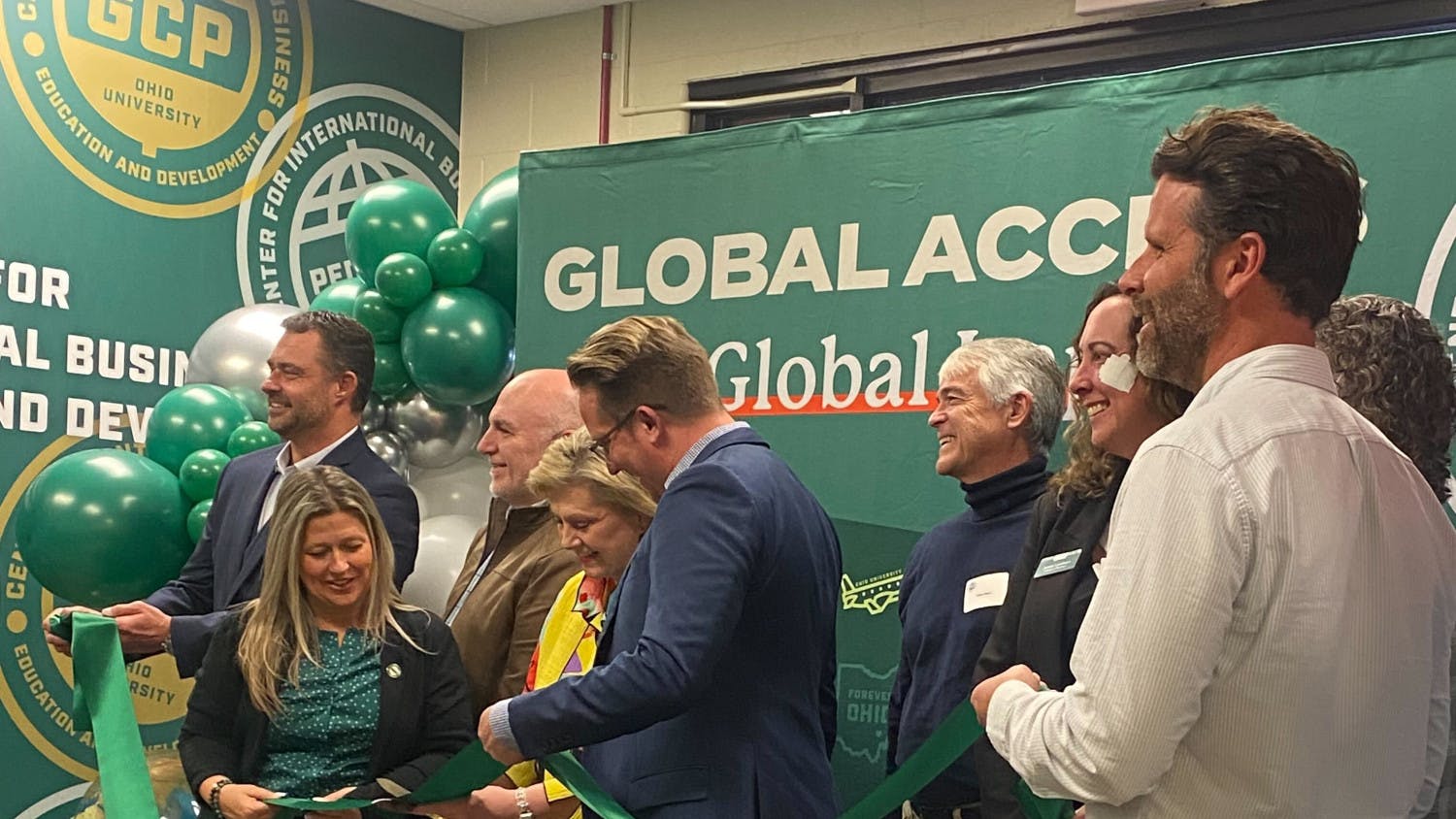Editor’s note: This is the fifth in a series analyzing President Roderick McDavis’ decade at Ohio University.
Ohio University was ranked third in the state in terms of the money it could use for research and development when President Roderick McDavis took office.
He said in his inaugural speech that he wanted to grow the university’s researching efforts “to rise to national prominence as a research university.”
Now, OU ranks sixth in the state.
OU still has more research and development money to work with than it did eight years ago. But its pool of money hasn’t increased at the rate of other public universities in Ohio.
OU had $57 million for research and development in 2012, the most recent data available, and was sixth among Ohio’s 12 public universities that provided data to the National Science Foundation. In 2004, OU had almost $40 million.
That means OU’s pool of money for research and development has grown by 44 percent in the eight years of available data during McDavis’ time as president.
Other public universities in the state, meanwhile, such as Cleveland State University, saw a 238 percent increase in its funds, and University of Toledo a 143 percent increase in its funds.
To compare, Cleveland State had more than $18 million in 2004 and University of Toledo had more than $28 million the same year. Now, Cleveland State has more than $61 million and University of Toledo has more than $68 million.
Only three universities had a lower growth rate than OU in the eight year period — Ohio State University (39 percent) Wright State University (21 percent) and Bowling Green State University (3 percent).
McDavis said in his inaugural speech in 2004 that he wanted, within five years, to attract $100 million of external funds for research. External funds include federal and state dollars. In 2012, only about a third of the $57 million was federally funded.
“The government is funding less research, but it goes in cycles,” said Robert Silva, director of the Technology Transfer Office.
“Institution funds” or money provided by the university provided most of the funding for research and development in fiscal year 2012, the most recent data available.
The same year, OU was ranked fourth in the nation for its return on investment in research, largely because of John Kopchick, the Goll-Ohio Eminent Scholar and professor of molecular biology at the Edison Biotechnology Institute. Kopchick began working with the institute in the 1980s.
Kopchick and other OU faculty and students developed the drug Somavert to help those with gigantism. The drug has generated more than $80 million in royalty income for OU and those who invest in it.
OU is continuously in the top tier of universities bringing in licensing royalties, largely because of Kopchick’s research, Silva said.
In fiscal year 2013, OU brought in nearly $10 million in licensing revenue.
McDavis planned to “develop innovative self-help proposals for entrepreneurial initiatives throughout the region” and “work closely with the Innovation Center to create more opportunities for new entrepreneurs,” according to a news release about his inaugural speech.
Since 1991, the Technology Transfer Office has been working to educate faculty, staff and students on everything from patent laws and conflict of interest to how to obtain grant dollars, Silva said.
OU has been encouraging research among students with the annual Student Expo, which had about 700 participants last year.
“One thing that we’re interested in is getting discoveries out to where they benefit people,” said Joseph Shields, vice president for Research and Creative Activity.
Other key medical research interests include studies on musculoskeletal neurological disease and diabetes, Shields said.
“(Diabetes) is a disease that has very large impact in our Appalachian Region,” he said.
Both the Russ College of Engineering and the Heritage College of Osteopathic Medicine have received more than $100 million in “transformational gifts” as a part of the Promise Lives Campaign, McDavis said.
Some of those donations have helped fund faculty, staff and student research in those colleges, Silva said.
“We simply allow people to give where they want to give,” McDavis said.
@ohitchcock
oh271711@ohio.edu






